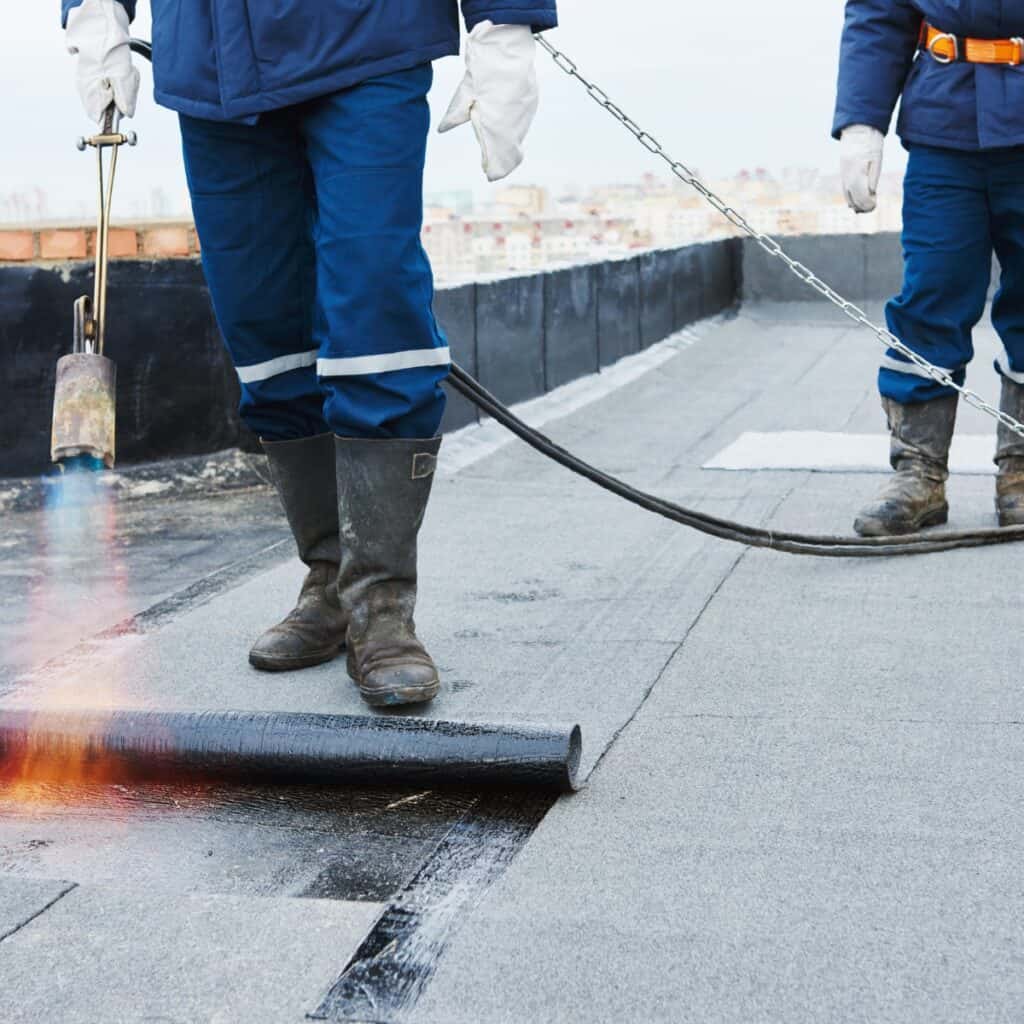Heat is a useful tool in construction for drying out materials and making them more malleable, especially when working with concrete. It’s also used to cure concrete and asphalt.
In this article, I’ll explain how heat is used in construction.

In this post we'll cover:
Heat Up Your Building: How to Use Heat in Construction
When it comes to constructing buildings, heat is an essential component that can be used in various ways to ensure comfort and energy efficiency. Here are some ways heat is used in construction:
- Heating the air: Heating the air inside a building is one of the most common uses of heat in construction. This is done through the use of HVAC (heating, ventilation, and air conditioning) systems that regulate the temperature and humidity levels in a building.
- Drying out moisture: Moisture can be a big problem in construction, especially during the building process. Heat can be used to dry out moisture in building materials such as concrete, wood, and drywall, preventing mold and other issues.
- Curing materials: Heat can also be used to cure materials such as concrete and asphalt, which helps them harden and become stronger.
- Insulation: Heat can be used to create insulation materials such as foam and fiberglass, which help to keep buildings warm in the winter and cool in the summer.
Types of Heat Sources
There are several types of heat sources that can be used in construction, including:
- Electric heaters: These are portable heaters that can be used to heat specific areas of a building.
- Gas heaters: These are more powerful than electric heaters and can be used to heat larger areas.
- Solar panels: Solar panels can be used to generate heat and electricity for a building.
- Geothermal systems: These systems use the heat from the earth to heat and cool a building.
Materials That Are Often Heated
In addition to the uses of heat and types of heat sources, there are also specific materials that are often heated in construction, including:
- Asphalt: Heat is used to make asphalt more pliable and easier to work with during the paving process.
- Concrete: Heat is used to cure concrete and make it stronger.
- Drywall: Heat is used to dry out moisture in drywall and prevent mold.
- Pipes: Heat is used to prevent pipes from freezing in cold weather.
Warming Up: Different Heat Sources Used in Construction
When it comes to heating up a construction site, natural heat sources are a great option. These sources include the sun, which can be used to heat up an area by simply allowing it to shine on the building. Another natural heat source is wood, which can be burned to produce heat. However, it is important to note that improper usage of wood can cause significant harm to the environment and the building.
Electric Heat Sources
Electric heat sources are a popular choice for construction companies and customers alike. They are easy to control and maintain, and they offer a comfortable level of heat. Some common types of electric heat sources include:
- Electric fan heaters: These are perfect for smaller areas and allow for great control over the amount of heat produced.
- Electric alternative energy heaters: These are designed to use low amounts of electricity and are perfect for areas where electricity is limited.
- Electrical heating components: These are single components that carry the input current and convert it into heat.
Heating Up: Materials that are Often Heated in Construction
Bricks and blocks are some of the most commonly used materials in construction, and they can be heated to improve their thermal properties. Here are some things to keep in mind when heating bricks and blocks:
- Clay bricks and blocks are often fired in a kiln to increase their density and conductivity, making them better at absorbing and releasing heat.
- Concrete blocks can be heated to improve their thermal mass, which is the ability to store and release heat over time.
- Heating bricks and blocks can be done with an open flame or in enclosed spaces, depending on the job and the contractors’ preferences.
Gypsum and Plaster
Gypsum and plaster are materials that are often used for temporary structures, and they can also be heated to improve their thermal properties. Here are some things to keep in mind when heating gypsum and plaster:
- Heating gypsum and plaster can improve their conductivity and density, making them better at absorbing and releasing heat.
- Gypsum and plaster should be heated slowly to avoid cracking or other damage.
- These materials can be heated in an open flame or in enclosed spaces, depending on the job and the contractors’ preferences.
Timber and Mineral Fibre Insulation
Timber and mineral fibre insulation are materials that are used to improve the thermal performance of buildings. Here are some things to keep in mind when heating timber and mineral fibre insulation:
- Heating timber can improve its thermal conductivity, making it better at absorbing and releasing heat.
- Mineral fibre insulation can be heated to improve its density and conductivity, making it better at absorbing and releasing heat.
- These materials should be heated slowly to avoid damage, and heating should be done in enclosed spaces to prevent heat loss.
Conclusion
Heat is used in construction for many different purposes, from drying materials to providing comfort and energy efficiency.
Heat is an essential component of building construction and helps dry moisture, cure materials, and warm the building. So, don’t be afraid to turn up the heat!
I'm Joost Nusselder, the founder of Tools Doctor, content marketer, and dad. I love trying out new equipment, and together with my team I've been creating in-depth blog articles since 2016 to help loyal readers with tools & crafting tips.
